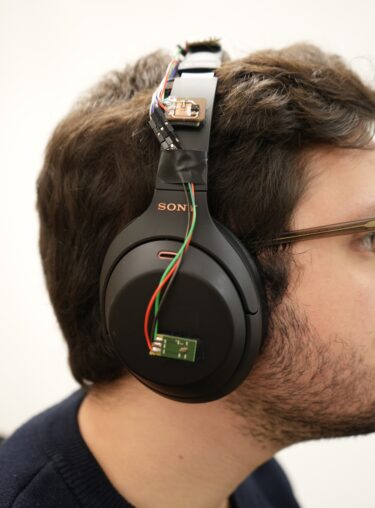Noice-cancelling headsets are great if you want to block out noise. But what if you still want to be able to hear those talking to you? Maybe you’re fed up with the construction noise across the street but still want to know when your friend or partner a few feet from you asks a question (and clearly hear what they’re saying too).
A team of researchers at the University of Washington set out to create a prototype of noise-cancelling headphones that silence noise, except for sounds within a radius of 3 to 6 feet. The goal is to help people focus on nearby sounds without being distracted by background noise.

And that’s just what they did. The researchers created a prototype of headphones that let users hear sounds within what the team dubbed as the “sound bubble.” If you’re confused by the term, it refers to the immediate area around a person (a radius of 3 to 6 feet area) where the headphone user can hear sounds clearly.
Senior author of the study Shyam Gollakota, a UW professor and accomplished inventor, said: “Humans aren’t great at perceiving distances through sound, particularly when there are multiple sound sources around them.”
“Our abilities to focus on the people in our vicinity can be limited in places like loud restaurants, so creating sound bubbles on a hearable has not been possible so far. Our AI system can actually learn the distance for each sound source in a room, and process this in real-time, within 8 milliseconds, on the hearing device itself,” he added.
How do they work?
So, how did they make the “sound bubble” headphones? They used regular noise-cancelling headphones and added six small microphones around the headband. These microphones were then connected to a small computer embedded in the headphones. The computer runs AI software to process sounds from the six microphones and determine which sounds are close by and which sounds are from afar. The microphones then amplify the nearby sounds and suppress the distant ones, creating the desired “sound bubble” effect.
The AI was trained extensively by placing the headphones on the head of a mannequin and playing sounds from different distances. Over time, the AI could accurately detect whether sounds were close or far away.
Video of the AI headphones:
“We’d worked on a previous smart-speaker system where we spread the microphones across a table because we thought we needed significant distances between microphones to extract distance information about sounds,” Gollakota said. “But then we started questioning our assumption. Do we need a big separation to create this ‘sound bubble’? What we showed here is that we don’t. We were able to do it with just the microphones on the headphones, and in real-time, which was quite surprising.”
The technology represents a big step forward in customizing noise-cancelling features, making it more adaptable and user-centric for diverse environments.
Reference:
Chen, T., Itani, M., Eskimez, S.E. et al. Hearable devices with sound bubbles. Nat Electron (2024). https://doi.org/10.1038/s41928-024-01276-z
